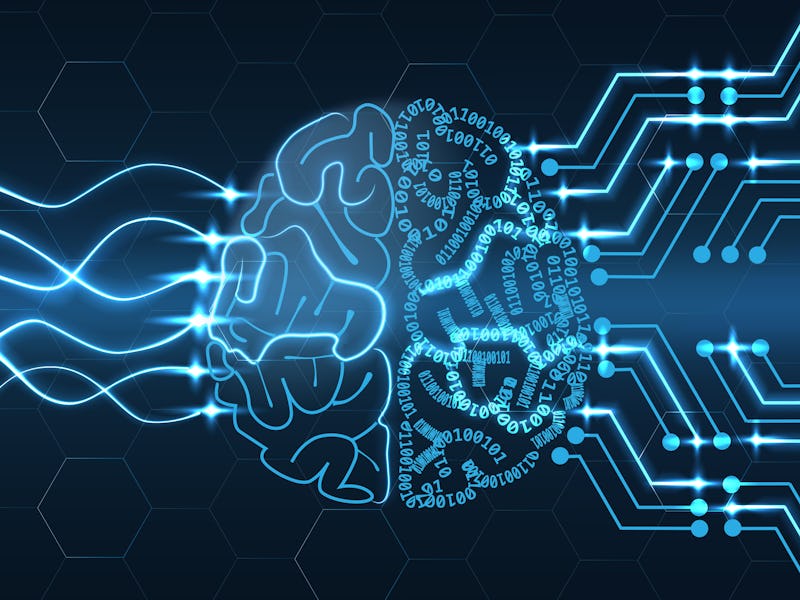Brain-decoding computer can restore this important human sense
For spinal cord patients, this innovation could be huge.

The feeling of grass beneath your fingertips, warm sand under your feet, the pain of getting too close to a fire: the world is full of sensations that we often take for granted. But for people who have suffered spinal cord injuries (SCI,) and there are approximately 288,000 of them in the United States alone, losing their sense of touch can greatly impact how they interact with the world around them. New research in the field of brain-computer interfaces could make this devastating loss of sensation reversible.
By implanting a computer chip into an SCI patient's brain and relaying neural signals to a computer, a team of researchers from the Battelle Memorial Institute (BMI) in Columbus, Ohio, has found a way to amplify small, imperceptible touch sensations in a patient. This computer chip will not only restore motion to paralyzed limbs, but it will restore a sense of touch as well. Compared to chance, the researchers say they achieved 90 percent accuracy in touch trials.
This improved motion and touch sensing would allow SCI patients to regain autonomy and ownership over their paralyzed limbs and more easily control them while completing tasks in their everyday lives.
Neither motion and sense restoring technology for SCI patients are unique themselves. But the study's first author and research scientist at BMI, Patrick Ganzer, tells Inverse that what sets their study apart is that senses were restored directly to the human body.
"There has been a lot of this work done in artificial limbs for amputees, so robotic limbs," says Ganzer. "[With] these robotic limbs, you want to move digits or fingers, however feeding touchback is tricky there. Other groups are using this similar brain-computer interface approach to restore movement control and touch, but they're doing this by stimulating the brain directly. The novel part that we're addressing is the participant is not using a robotic limb, but he's using his own hand -- which is really challenging."
In the study, published Thursday in the journal Cell, the researchers tested these ideas in practice on Ian Burkhart, a 28-year-old SCI patient who had suffered the loss of feeling and movement in his right arm following a car accident ten years ago. But in order to restore movement and touch to Burkhart's hand, the team had to first access the source of this movement: Burkhart's brain.
By decoding neural signals from the participant's brain, the researchers were able to create movement and sensory perception in the paralyzed limb.
Ganzer tells Inverse that their system worked by first collecting neural signals from an implant on the surface of Burkhart's brain and relaying them to a nearby computer. Using intelligent algorithms, the computer broke down this stream of data into movement information and sensory information.
This second stream of information was key, write the authors, because previous studies had believed that patients like Burkhart were no longer generating these sensory signals. This new study, however, found that these touch-based neural signals were still present, just at much, much lower levels, such that a patient like Burkhart was unable to "feel" them.
To help make these ghost-like touch signals more perceptible, the team's algorithm boosted their signal.
Finally, the computer relayed the processed data back to Burkhart through stimulation to forearm electrodes (for movement) and vibrations on a haptic armband (for a feeling of touch.)
When having Burkhart complete these movement tasks (like grabbing an object) blindfolded, the researchers found that the addition of these stimuli allowed him to do so far better than just chance, with a detection rate as high as 90 percent.
Going forward, Ganzer says the team is now working to develop a model of this experiment that can work just as well at home as in the laboratory. Ganzer says that innovations like these would give SCI patients even more control over how they navigate their worlds.
"One of our main goals right now," says Ganzer, "is to get the system portable, so it may be even wheelchair mountable, and do these experiments in the home where it's noisy and much more complicated... We want this technology to be used not in the laboratory eventually but at home, helping participants."
Abstract: Paralyzed muscles can be reanimated following spinal cord injury (SCI) using a brain-computer interface (BCI) to enhance motor function alone. Importantly, the sense of touch is a key component of motor function. Here, we demonstrate that a human participant with a clinically complete SCI can use a BCI to simultaneously reanimate both motor function and the sense of touch, leveraging residual touch signaling from his or her own hand. In the primary motor cortex (M1), residual subperceptual hand touch signals are simultaneously demultiplexed from ongoing efferent motor intention, enabling intracortically controlled closed-loop sensory feedback. Using the closed loop demultiplexing, BCI almost fully restored the ability to detect object touch and significantly improved several sensorimotor functions. Afferent grip-intensity levels are also decoded from M1, enabling grip reanimation regulated by touch signaling. These results demonstrate that subperceptual neural signals can be decoded from the cortex and transformed into conscious perception, significantly augmenting function.